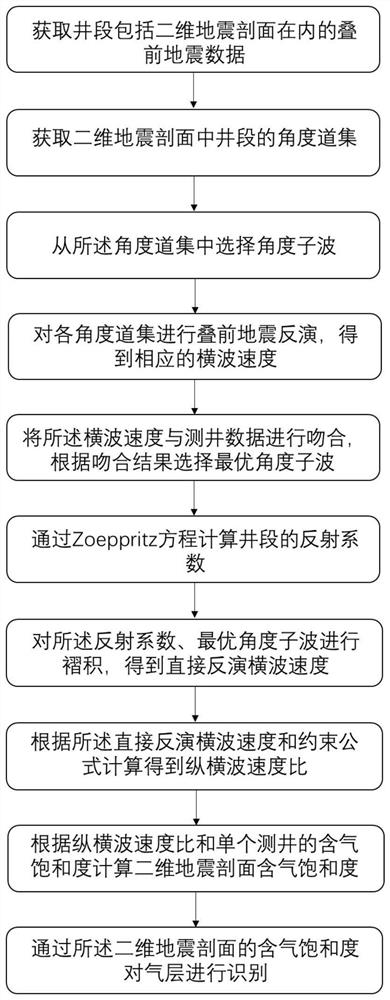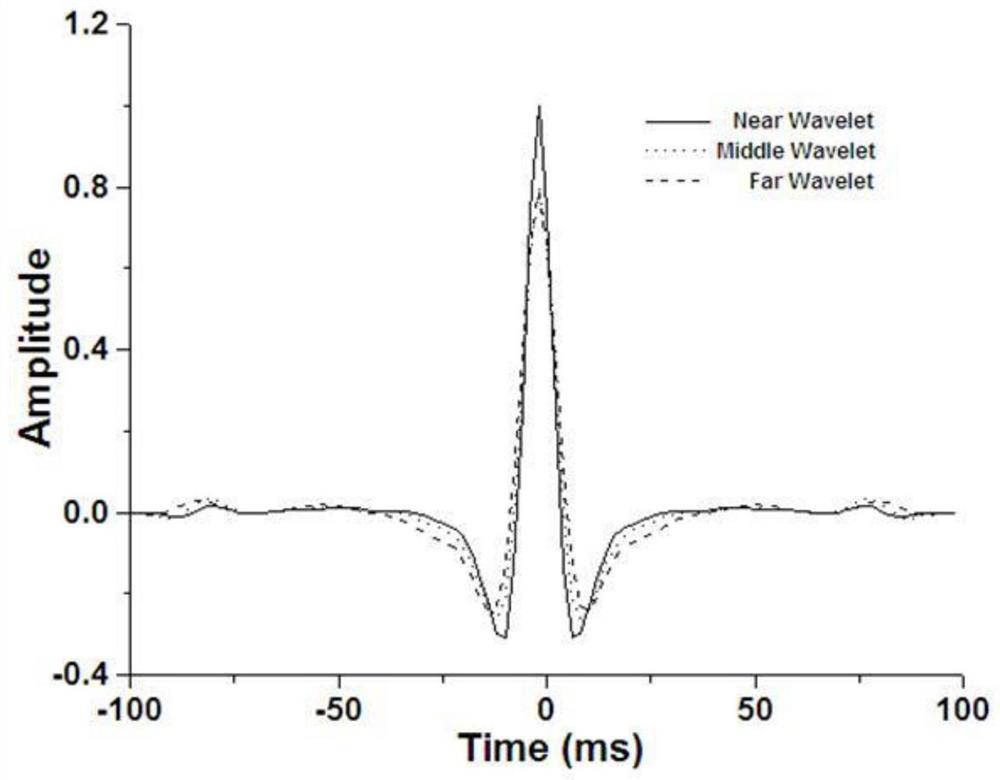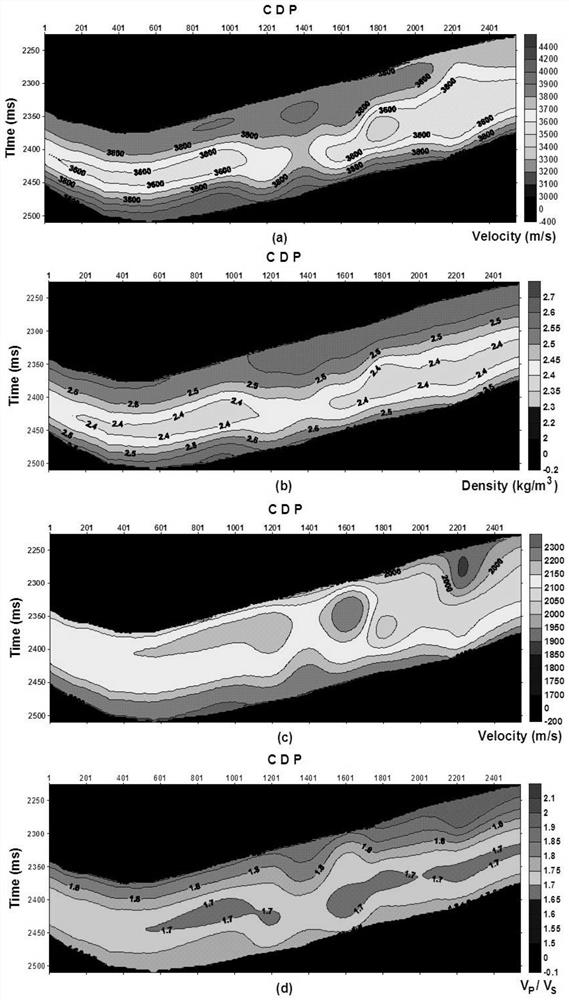Well section gas layer identification method and system based on pre-stack and post-stack joint inversion
An identification method and a technology for segment gas layers, which are applied in the field of oil and gas geophysical exploration and can solve the problem of low accuracy in calculating gas saturation.
- Summary
- Abstract
- Description
- Claims
- Application Information
AI Technical Summary
Problems solved by technology
Method used
Image
Examples
Embodiment Construction
[0055] In order to facilitate the understanding of those skilled in the art, the present invention will be further described below in conjunction with the accompanying drawings, which cannot be used to limit the protection scope of the present invention.
[0056] Such as figure 1 As shown, a method for identifying gas layers in well intervals based on pre-stack and post-stack joint inversion includes the following steps:
[0057] Acquiring pre-stack seismic data of the well section, the pre-stack seismic data comprising a two-dimensional seismic section;
[0058] Obtain the angle gather of the well section in the 2D seismic profile;
[0059] selecting angle wavelets from said angle gather;
[0060] Perform pre-stack seismic inversion for each angle wavelet to obtain the corresponding shear wave velocity;
[0061] matching the shear wave velocity with the logging data, and selecting the optimal angle wavelet according to the matching result;
[0062] The reflection coeffici...
PUM
 Login to View More
Login to View More Abstract
Description
Claims
Application Information
 Login to View More
Login to View More - R&D
- Intellectual Property
- Life Sciences
- Materials
- Tech Scout
- Unparalleled Data Quality
- Higher Quality Content
- 60% Fewer Hallucinations
Browse by: Latest US Patents, China's latest patents, Technical Efficacy Thesaurus, Application Domain, Technology Topic, Popular Technical Reports.
© 2025 PatSnap. All rights reserved.Legal|Privacy policy|Modern Slavery Act Transparency Statement|Sitemap|About US| Contact US: help@patsnap.com



